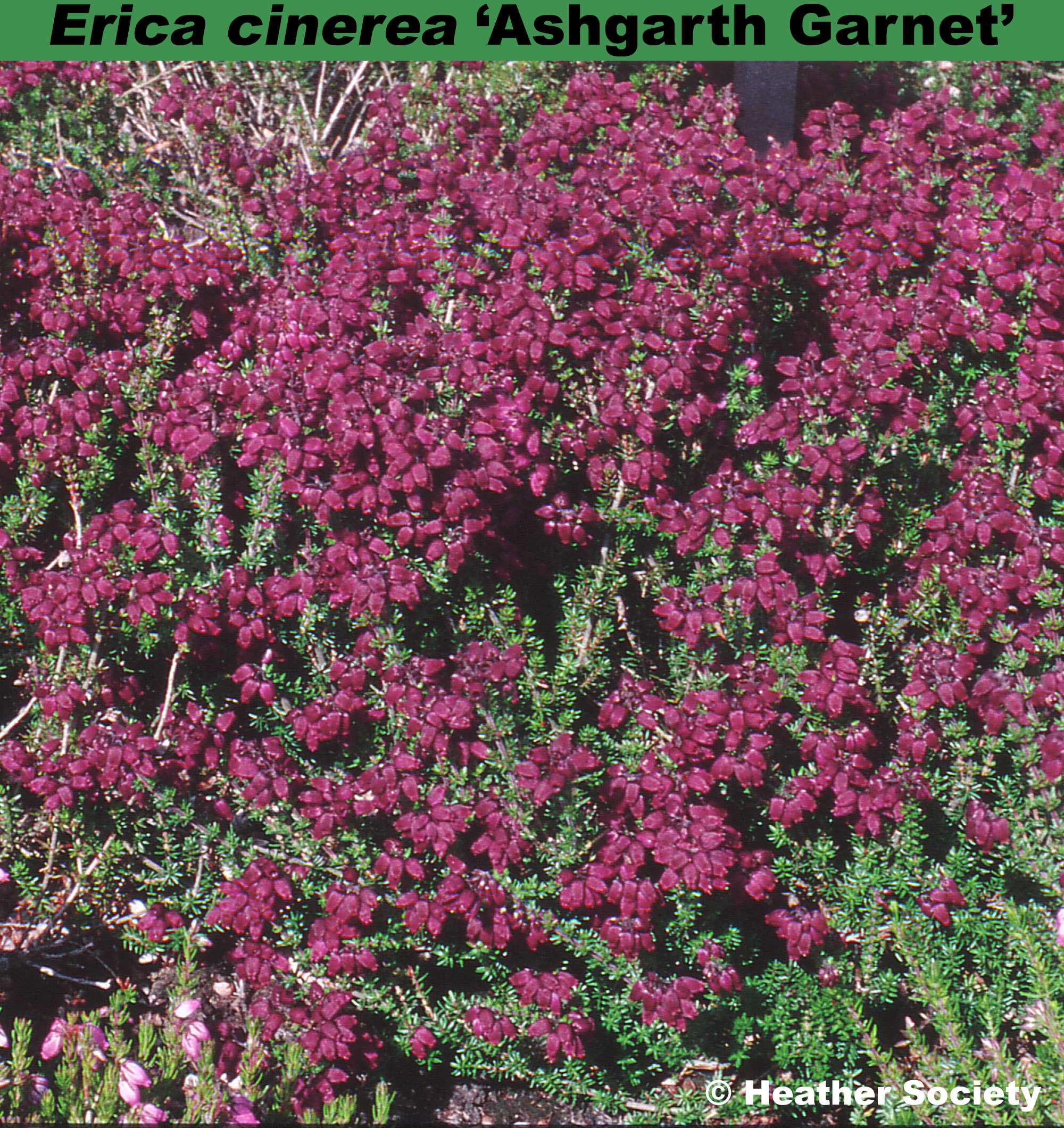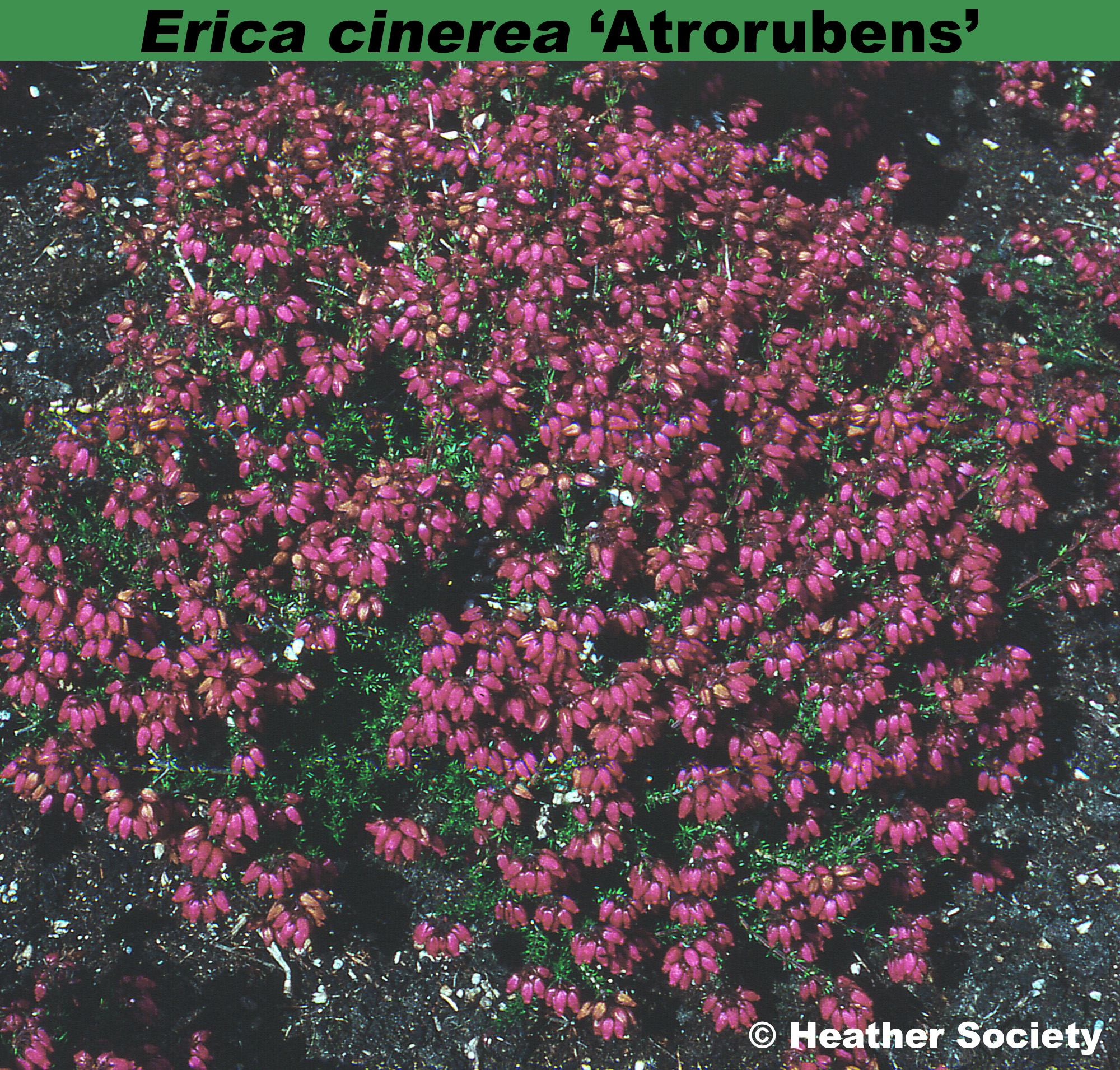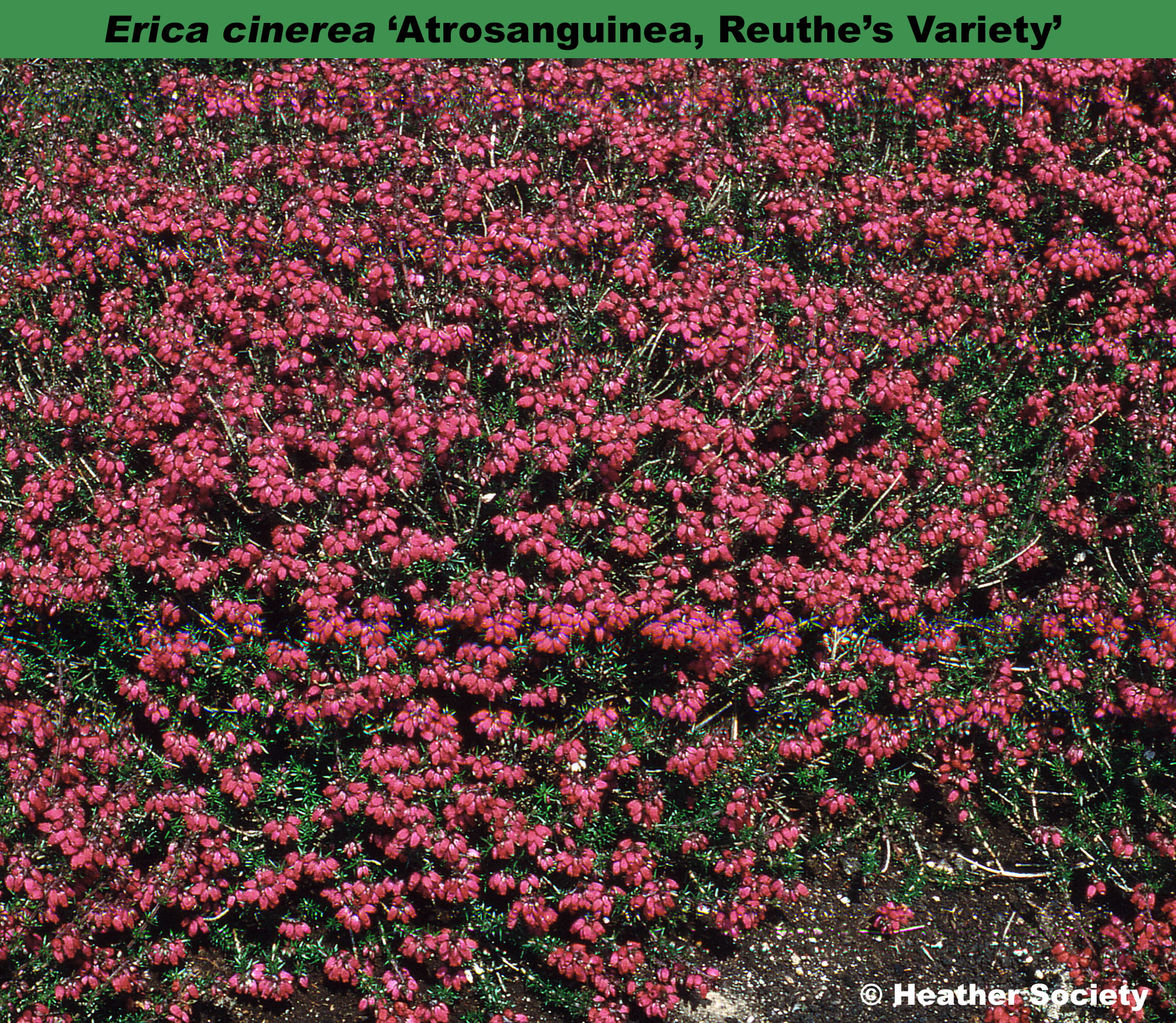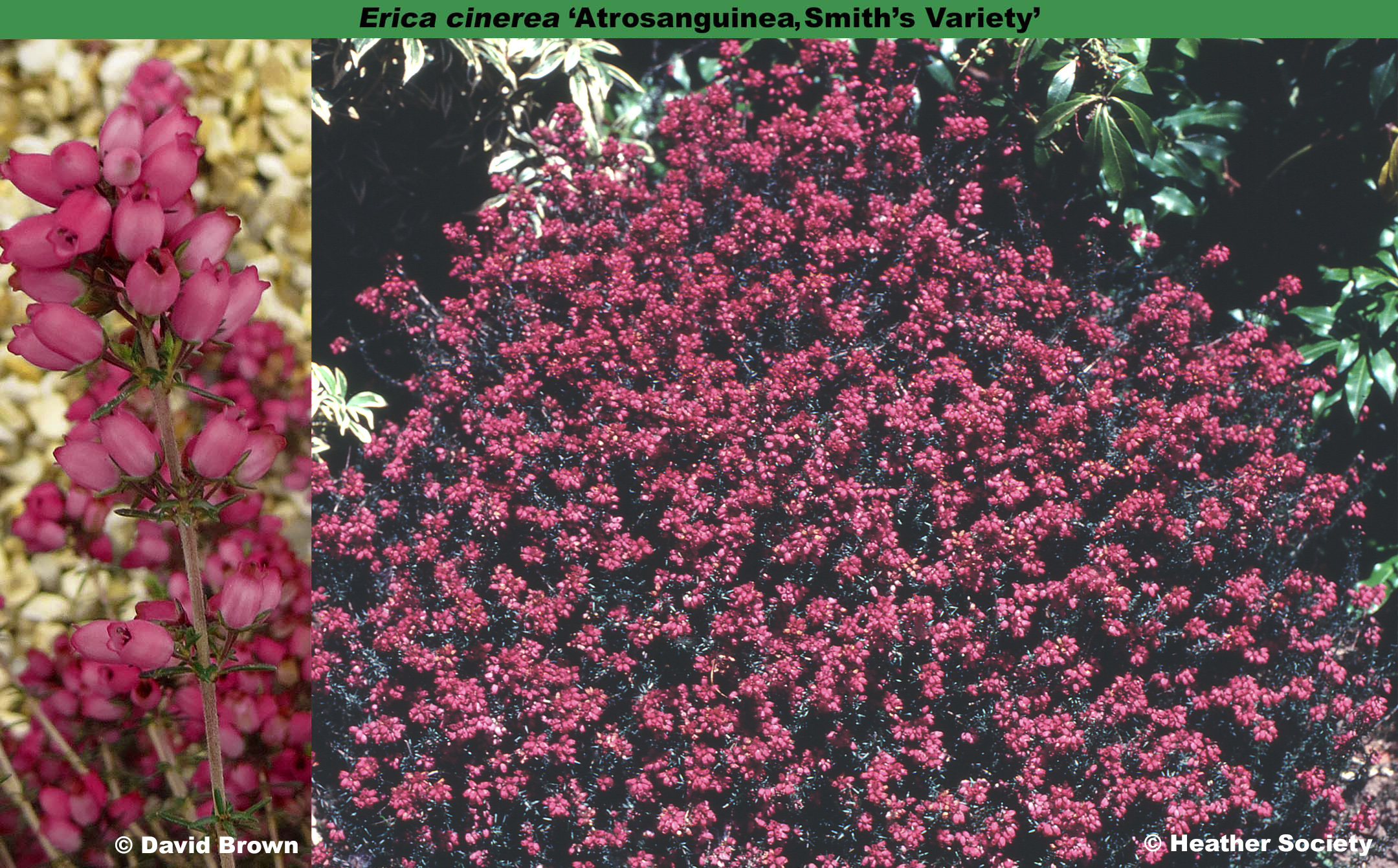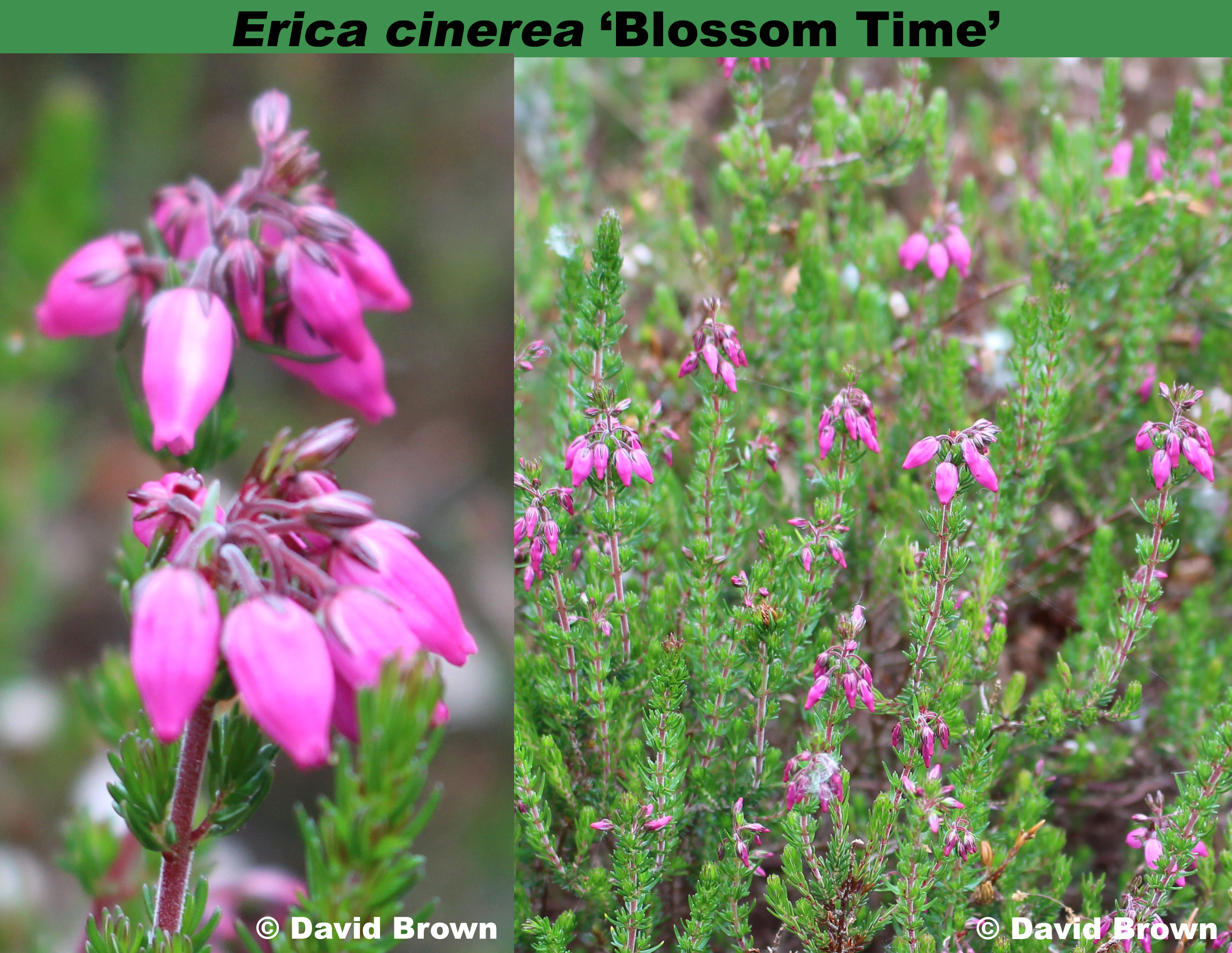Rich lavender flowers, VI–X; dark green foliage; vigorous spreading habit; height 26–30cm; spread 46–60cm.
Heathers
‘Ashgarth Garnet’
Beetroot (H9) flowers, VI–IX; dark green foliage; upright; height 26–30cm; spread 31–45cm.
Seedling; found by Horace (“Papa”) Hale (Ashgarth, Haslemere, Surrey, England) by 1973; introduced by P. G. Davis (Haslemere) by 1978.
Named after H. Hale’s house; garnet refers to the flower colour.
‘Atropurpurea’
Amethyst (H1) flowers, VI–X; dark green foliage; height 21–25cm; spread 46–60cm.
Listed as early as 1826 by Conrad Loddiges (Hackney, London, England). However the plant currently grown under this name was found by Georg Arends (Wuppertal, Germany) and introduced by him by 1920.
Named from atro- = dark; purpureus = purple. The name is sometimes hyphenated, atro-purpurea (e.g. J. F. Letts, Hardy heaths & the heather garden: 83 (1966, 2nd edition).).
‘Atrorubens’
Ruby (H5) flowers, VI–X; dark green foliage; provides neat ground-cover; height 26–30cm; spread 46–60cm.
Name used by G. Sinclair in 1825, at varietal level; it is unlikely that the clone presently named ‘Atrorubens’ is identical with the plant Sinclair knew.
Named from atro- = dark; rubens = reddish.The name is sometimes hyphenated, atro-rubens (e.g. J. F. Letts, Hardy heaths & the heather garden: 83 (1966, 2nd edition).).
‘Atrorubens, Daisy Hill’
Correct name ‘Daisy Hill Ruby‘
‘Atrosanguinea, Reuthe’s Variety’
Ruby (H5) flowers, VII–VIII; dark green foliage; more or less prostrate; height 10–15cm; spread 26–30cm.
Introduced by G. E. Reuthe (Keston, Kent, England) in 1926, as ‘Atrosanguinea’; re-named by Maxwell & Beale, to distinguish the clone from another introduced by James Smith & Sons (Darley Dale, Derbyshire).
Named from atro- = dark; sanguineus = blood-red. The Latin name is sometimes hyphenated, atro-sanguinea (e.g. J. F. Letts (1966).) Letts also employed a colon rather than brackets (‘Atro-sanguinea: Reuthe’s Variety’). Eponym: after G. E. Reuthe.
‘Atrosanguinea, Smith’s Variety’
Ruby (H5) (RHS 61A) flowers, VI–IX; dark green foliage; broad spreading habit; height 21–25cm; spread 46–60cm.
Found by James Smith & Sons (Darley Dale, Derbyshire, England), and introduced by James Smith & Sons in 1852. Apparently re-named by Maxwell & Beale (Broadstone, Dorset), to distinguish it from another clone introduced by Reuthe.
Named from atro- = dark; sanguineus = blood-red. The Latin name is sometimes hyphenated, atro-sanguinea (e.g. J. F. Letts (1966).) Letts also employed a colon rather than brackets (‘Atro-sanguinea: Smith’s Variety’).
‘Baylay’s Variety’
Amethyst (H1) flowers, VII–IX; dark green foliage; very compact, slow growing; height 10–15cm; spread 21–25cm.
‘Bemmel’
Lilac-pink flowers, VI–IX; dark green foliage; spreading habit; height 25cm; spread 40cm. Seedling raised by J. A. M. Dahm (Bemmel, Netherlands) by 1993.
‘Blossom Time’
Magenta (H14) flowers, VI–IX; dark green foliage; broad spreading habit; height 26–30cm; spread 46–60cm.
Possible seedling; raised and introduced by Hardwicks Nursery (Newick, Sussex, England) about 1963.

